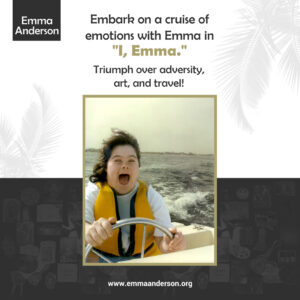Introduction
In a world where uniqueness is often celebrated, the arts stand out as a universal language, breaking barriers and connecting individuals across myriad divides. The inclusion of diverse voices in the arts not only enriches the cultural landscape but also enhances the creative process. This exploration delves into how diversity and inclusivity in the arts spur innovation, creativity, and understanding, painting a canvas where every hue and stroke contributes to a more vibrant masterpiece.
Understanding Diversity in the Arts
Diversity in the arts goes beyond mere representation of various races and cultures. It encompasses a rich tapestry of experiences, abilities, ages, socioeconomic backgrounds, and more. This spectrum of perspectives is essential in fostering an environment where creativity flourishes, unbounded by traditional norms and enriched by a myriad of voices.
The Evolution of Artistic Expression Through Diversity
Art, in its essence, is an evolving narrative shaped by the experiences and stories of its creators. Historically, certain groups have been underrepresented in mainstream art narratives, leading to a skewed perception of the artistic canon. However, recent years have seen a paradigm shift, with a growing emphasis on inclusivity and representation. This shift is not merely about providing space for diverse artists; it’s about recognizing the value that these varied perspectives bring to the art world.
Diversity Across Art Forms: A Kaleidoscope of Creativity
Visual Arts: In painting, sculpture, and photography, diversity challenges traditional aesthetics and introduces new themes and techniques. Artists from varied backgrounds bring unique styles and narratives, enriching the visual arts landscape with their distinctive viewpoints.
Performing Arts: Dance, theater, and music become more vibrant with the inclusion of diverse artists. These art forms, steeped in expression and storytelling, gain depth and resonance when they represent a wider range of human experiences.
Literary Arts: Literature thrives on the diversity of its voices. Writers from different backgrounds broaden the scope of narratives, offering readers a chance to immerse themselves in varied experiences and perspectives, thereby fostering empathy and understanding.
The Role of Inclusive Art Programs
Inclusive art programs and initiatives are vital in nurturing and showcasing diverse talent. They provide platforms for underrepresented artists to hone their craft and gain exposure. These programs are crucial not only in supporting individual artists but also in shaping a more inclusive and representative art sector.
Technology: A Catalyst for Inclusive Art
The digital age has democratized the arts like never before. Technology enables artists from all walks of life to share their work globally, transcending physical and geographical barriers. Online platforms, social media, and virtual galleries have opened up new avenues for artists who might have been marginalized by traditional art institutions.
Navigating the Challenges and
Seizing Opportunities
Despite progress, challenges to achieving full inclusivity in the arts remain. Access to resources, industry biases, and cultural barriers can impede the journey towards a truly diverse art world. However, these challenges also present opportunities for dialogue, learning, and growth. Addressing these issues head-on is essential for the continued evolution of the arts.
The Tangible Benefits of Diversity in Creativity
The impact of diversity in the arts is profound. It fosters creative problem-solving, drives innovation, and leads to more meaningful and impactful art. Diverse representation in the arts also promotes cultural understanding and empathy, exposing audiences to experiences and perspectives different from their own.
The Power of Audiences in Shaping Inclusive Arts
Audiences have a significant role in advoca
ting for diversity in the arts. Supporting diverse arti
sts and art forms – attending exhibitions, performances, reading varied literature – helps drive demand for inclusive art. Consumer choices can influence trends and norms, making the role of the audience pivotal in shaping an inclusive art world.
Conclusion
Inclusivity in the arts is about more than just opening doors; it’s about recognizing and valuing the unique contributions of every artist. The fusion of different perspectives in the arts doesn’t dilute quality; rather, it enriches it, creating a vibrant, dynamic tapestry reflective of the vast expanse of human experience. As we advocate for greater diversity in the arts, we pave the way for innovation, creativity, and a deeper understanding of the world around us. In the end, the arts have the power to unite us in our diversity, celebrating the multitude of

